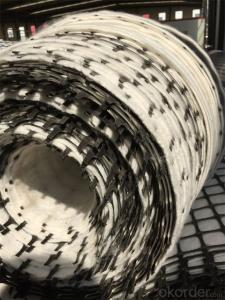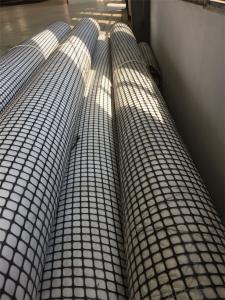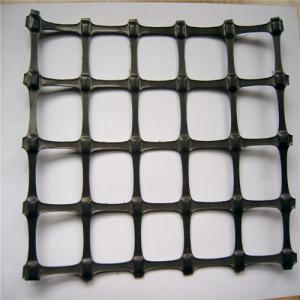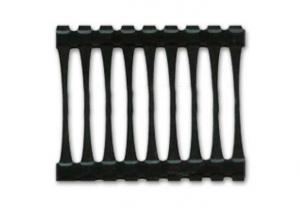Triax PP Uniaxial Geogrids
OKorder Service Pledge
OKorder Financial Service
You Might Also Like
Item:PP Uniaxal geogird
1.Material:PP
2.Tensiel strength:30KN/M
3.Size:2.5m*50M
4. Elongation:10%

Uniaxial geogrid ,made of high molecular polymer ,is extruded into sheet and then punched into regular mesh patten,and finally stretched in the longitudinal direction.
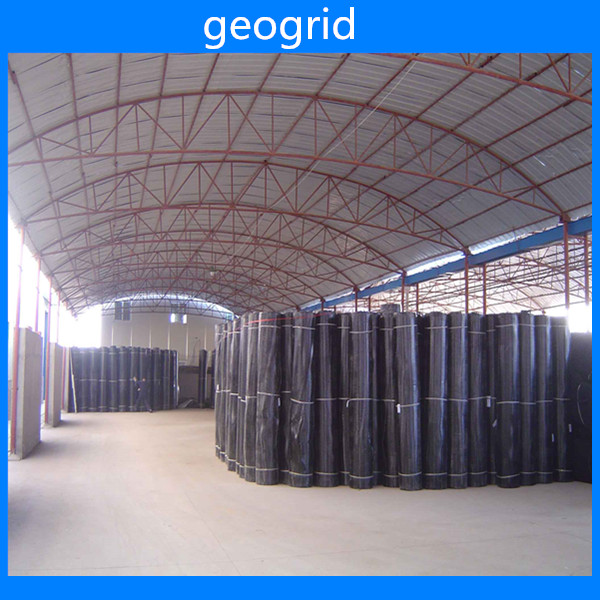
Feature:
With high tensile strength and tensile modulus
Function:
Uniaxial goegrid is mainly applied in highway,railway,slope protecting projects,retaining wall,dam to strengthen land loading capacity and extend its service life.Features in reducing area,project cost and matentainence cost,convenient to construct.

- Q: Can geogrids be used in reinforced concrete pavements?
- Yes, geogrids can be used in reinforced concrete pavements. Geogrids are commonly used as a reinforcement material in concrete pavements to enhance their structural integrity, reduce cracking, and improve load distribution. By placing geogrids within the concrete, they provide additional tensile strength, prevent the formation and propagation of cracks, and increase the overall durability and lifespan of the pavement.
- Q: What are the long-term performance monitoring requirements for geogrids?
- The long-term performance monitoring requirements for geogrids include regular inspection and assessment of their mechanical properties, such as tensile strength, creep behavior, and durability. Monitoring should also involve evaluating the geogrid's ability to withstand environmental factors such as chemical exposure, temperature fluctuations, and UV degradation. Additionally, long-term monitoring should assess the geogrid's performance in terms of soil interaction, stability, and its impact on the overall performance of the reinforced structure.
- Q: What are the advantages of using geogrids in soil nailing applications?
- Geogrids offer several advantages in soil nailing applications. Firstly, they enhance the stability and strength of soil by acting as a reinforcement material. This helps to prevent slope failures and soil erosion. Secondly, geogrids improve the overall performance and lifespan of structures by providing a reliable method of soil stabilization. Additionally, they are cost-effective and relatively easy to install, making them a practical choice for soil nailing projects.
- Q: Can geogrids be used in pipeline construction?
- Yes, geogrids can be used in pipeline construction. Geogrids are commonly used as a reinforcement material in pipeline construction to provide stabilization and prevent soil movement. They help to distribute loads and provide added support to the pipeline, improving its overall performance and longevity.
- Q: Which floor is paved on the roadbed
- Fixed grid end, by laying machine or manual will grill slowly pulled forward each shop, shop 10 meters long artificial investigation at a time, until a volume grating puwan, put the next volume, operation with; 3, ground shop: Volume long unit as the laying of the long, should be covered grille with long period, then the overall check again laying quality, then laying the next paragraph, a laying, grille grille to overlap a grid spacing for the lap length, tie fixed line continues to spread second section direction.
- Q: How to restore the plastic geogrid after being destroyed?
- 3 when laying geosynthetics, the direction of high strength should be placed in the main stress direction of the embankment.4 geosynthetic materials should be paved after the design requirements of the back section, and timely coverage with sand.
- Q: Can geogrids be used in reinforced soil slopes?
- Yes, geogrids can be used in reinforced soil slopes. Geogrids are commonly used in reinforced soil structures to enhance their stability and strength. They are placed within the soil layers to provide additional tensile strength and distribute the applied loads, thereby preventing slope failures and improving overall performance.
- Q: Are geogrids suitable for use in steep slopes?
- Yes, geogrids are suitable for use in steep slopes. Geogrids provide reinforcement and stability to soil, helping to prevent erosion and slope failure. They are designed to withstand high tensile forces and can effectively reinforce steep slopes, making them a suitable solution for such applications.
- Q: What are the limitations of using geogrids?
- Geogrids have certain limitations that need to be considered. First, they are not suitable for all soil types and conditions, as they may not provide sufficient reinforcement or stability in certain situations. Additionally, geogrids are not effective in controlling erosion or preventing soil movement on their own; they need to be combined with other erosion control measures. Furthermore, installation and maintenance of geogrids can be complex and require expertise, making them more expensive compared to traditional soil stabilization methods. Finally, geogrids have a limited lifespan and may degrade over time, requiring replacement or repair.
- Q: High strength geogrid reinforced cloth, steel plastic grille, PET polyester grille, PP welded geogrid, steel plastic composite tensile band, where are these geosynthetics produced?
- Geogrid is a kind of main geosynthetics, compared with other geosynthetics,
Send your message to us
Triax PP Uniaxial Geogrids
OKorder Service Pledge
OKorder Financial Service
Similar products
Hot products
Hot Searches
Related keywords








